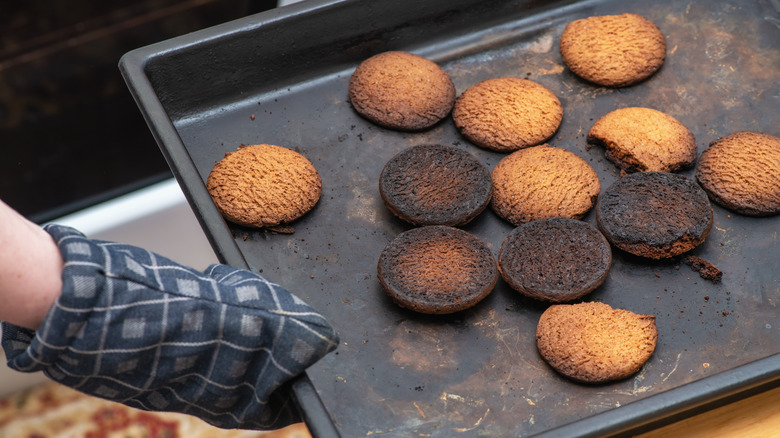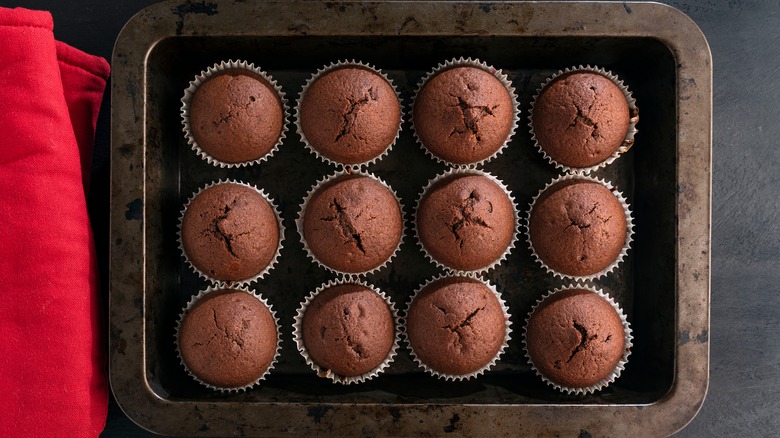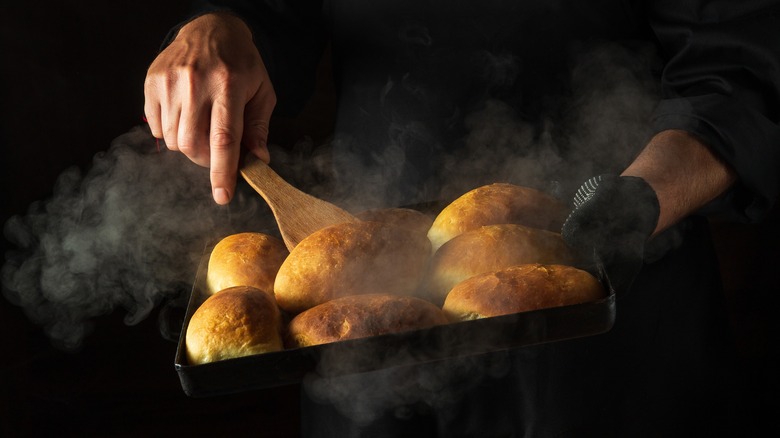Yes, It Matters What Color Your Baking Sheet Is
Ask any baker, and they'll tell you that having a good baking sheet is just as important as having a well-written recipe. Fortunately, you're never short of options in this department. You can find baking sheets made from various materials (usually, either glass or metal) and in just about every shape, size, and color these days. But while it's easy to see how factors like size and material can impact your baking, you might be surprised to learn that the color of the sheet plays a pretty important role in how your orange zested chocolate chip cookies will turn out, too.
If you've recently picked up a dark-colored baking sheet (like grey or black), be extra careful when placing your dough on it and popping it into the oven. Dark baking sheets absorb heat differently from regular metal ones, and if you don't take that into account, you might end up burning the bottoms of your pastries!
Dark baking sheets heat up more than lighter ones
Dark surfaces, by nature, are more efficient at absorbing heat energy compared to any other color, and black objects absorb light in all wavelengths and turn them into heat. On the other hand, something white will reflect light instead. It's basically the same reason why if you were to wear a black shirt on a sunny day, you'd become much warmer than if you were to wear a pastel colored shirt.
In the context of baking, a dark baking sheet absorbs more of the oven's heat, and its surface gets hot very quickly — a lot faster than a lighter-colored sheet. This is why many people notice their baked goods becoming overly browned on the bottom when using dark pans, even when they follow the recipe down to a tee. If your baking sheet is new, it'll still have a glossy luster to it. That glossiness will help it reflect some of the heat away and cut back on excessive heat retention somewhat. But it won't do away with a dark color's tendency to overheat your baked treats altogether, so you'll have to learn how to work around it.
How to work around a dark baking pan
The easiest and probably the most convenient way to deal with a dark colored baking sheet is to simply lower the oven temperature by 25 degrees Fahrenheit. This will compensate for the increased heat absorption and allow the pan (as well as your treats) to heat in a more controlled fashion.
You might also need to shorten the cooking time by a few minutes compared to the recipe instructions. Remember, the dark pan will make the dough brown faster. There's no hard and fast rule for how much time to cut, but a good rule of thumb is to check how your pastries are fairing when you're about three-quarters of the way through the suggested baking time in the recipe. Depending on how done they are, you can adjust by baking in short increments of 5 to 10 minutes until the browning level is just right.
Another trick is to line your dark pan with aluminum foil. The foil's reflective surface helps deflect some of the heat, creating a gentler baking environment. It takes a bit more effort, but if you're fond of how your dark pan looks (or already own one), taking the extra step is less of a hassle than dealing with overcooked pastries.


